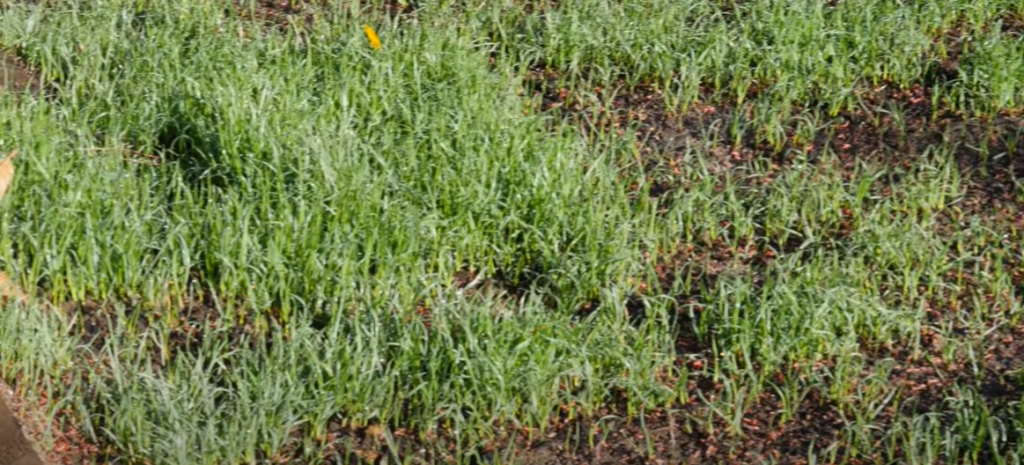Weeds are the bane of every lawn owner’s existence. They invade landscapes seemingly overnight, stealing water, nutrients and sunlight from desirable grasses. While hand pulling weeds works for small infestations, most homeowners eventually turn to weed killers to gain the upper hand This begs the question once weeds are eliminated, will grass naturally fill in bare spots? The answer depends on the extent of the original weed infestation
If Weeds Were the Only Growth
In lawns where weeds were the sole growth, blanketing the entire landscape, killing them leaves nothing but bare soil behind. Without competition from other plants, weed seeds in the soil will sprout and recolonize the area. Grass seed must be sown to give desirable turf a foothold.
Simply broadcast spreading grass seed over dead weeds seldom succeeds. The seeds end up on the soil surface where they dry out and fail to germinate. For the best results, the dead weeds should be removed and the soil lightly tilled before seeding. This places the grass seed in contact with soil where moisture is present.
An alternative is to rent a slice seeder which cuts uniform furrows in the soil and drops in grass seed. The furrows protect seeds and give them the moisture and contact needed to germinate. Slice seeding also avoids the need to till up weed seeds buried deeper in the soil profile.
New grass seedlings are vulnerable until the roots take hold Expect to water frequently to keep seeds and seedlings moist Apply a light mulch over seeded areas to conserve moisture and moderate soil temperatures. Within 4 to 6 weeks, the grass should be established enough to survive on normal rainfall or irrigation.
Weeds Mixed with Existing Grass
Where weeds invade lawns but healthy grass still remains, the prognosis is better. Killing weeds in established lawns temporarily leaves bare patches, but surrounding grass fills back in over time. Herbicides that target broadleaf weeds while sparing grasses are ideal in these situations.
However, lawns weakened by inadequate fertility, improper mowing practices or overseeding take longer to recover. Core aeration, fertilization and proper irrigation will accelerate regrowth. Overseeding thin areas in fall helps thicken up grass. But patience is still required for full recovery.
Homeowners striving for lush, weed-free lawns should adopt proactive lawn care practices. Maintaining a vigorous, dense lawn is the best defense against weeds establishing in the first place. Here are some tips for keeping grass thick and healthy:
- Mow at the proper height – around 3 inches for cool season grasses. Longer grass promotes deeper roots and shades out weeds.
- Fertilize 3 to 4 times per year, using products formulated for the season. Spring, summer, fall and winter turf needs differ.
- Water deeply and infrequently. Avoid frequent, light watering that only dampens the surface.
- Dethatch and aerate annually to alleviate soil compaction.
- Overseed thin spots in fall to thicken up grass before winter.
- Apply pre-emergent herbicides in spring to prevent annual weeds like crabgrass.
With proper lawn care practices, grass can choke out weeds and eliminate the need for weed killers. But when weeds do slip through, have confidence that grass will reclaim bare areas left after targeted weed control. Lawn grass is resilient and resourceful, evolving to fill voids and form a lush, dense playing surface.
How to Kill Weeds Before Planting Grass Seed – It’s About Timing!
FAQ
Will grass grow after killing weeds?
Will grass eventually choke out weeds?
What to do after killing weeds in a lawn?
How to restart a lawn full of weeds?
Do weeds kill grass seed?
Weeds will steal water and nutrients grass seed needs. A weedy lawn will kill grass seed. Destroy the weeds first, then seed your lawn. Instead of trying to overseed a lawn to choke out weeds, it’s essential to get rid of the weeds first, provide the right soil nutrients, and then seed your lawn.
Can You overseed a lawn after killing weeds?
Overseed your lawn in the fall after killing weeds in late summer. If you’re late, scalp the weedy lawn, rake away all the debris, and spread grass seed. Some weeds will germinate and grow with the grass, but you can control them using a post-emergent herbicide before they spread further.
How long should you kill weeds before planting grass seed?
Kill and remove weeds from your lawn at least 6 weeks before overseeding if you’re using a post-emergent herbicide. Alternatively, remove weeds by hand-pulling manually. Weed killers will affect the seed germination, so, allow enough time as indicated on the product label before planting grass seed.
Will herbicide kill weeds but not grass?
There are several selective herbicides on the market that will kill weeds but not the grass in your lawn. The correct herbicide application depends on the type of weed invading your lawn and the type of grass you want to maintain. Will grass eventually choke out weeds? While grass can choke out weeds, the opposite often happens.
- A Complete Guide to Caring for Yuki Cherry Blossom Shrub - January 23, 2025
- Identifying Red Hot Poker Seeds: What to Look For When Harvesting Torch Lily Pods - January 23, 2025
- A Complete Guide to Harvesting Evening Primrose Seeds - January 23, 2025

